LANDING ZONE
School of Helicopter Handling
606 (Chiltern) Sqn RAUXAF
25 Years of the JHC









School of Helicopter Handling
606 (Chiltern) Sqn RAUXAF
25 Years of the JHC








Formed in 1999 the Joint Helicopter Command has been deployed on operations around the globe every year for the last 25 years. Drawing together personnel and aircraft from all three Services it has successfully delivered for defence, be that warfighting, humanitarian relief or assisting the civil authorities in the UK.
The next chapter in our history is our re-organisation into the Joint Aviation Command which took place on 1 Apr 24, bringing together the Army Uncrewed Aircraft Systems alongside existing rotary wing platforms. Part of the Army’s modernisation programme it recognises the rapid proliferation of uncrewed aviation and the need to develop and integrate these technologies with existing battlefield helicopter capabilities.
Transition to this new Command has taken 12 months of hard work to come to fruition and it is testament to the professional, dedicated and committed workforce that the new JAC has already deployed overseas taking part in Ex STEADFAST DEFENDER. Apache, Chinook, and Wildcat helicopters have been joined by 32 Regt RA Puma UAS, the newest members of JAC, who are all supporting 16 Air Assault Brigade in the largest NATO exercise since the Cold War. Our presence in the Baltic region has not only shown the JAC to be an agile, interoperable, and resilient force but has reassured our NATO

allies and military partners that the UK can deploy forces globally at pace to deliver effective defence.
Over the last few months many of our activities have featured in national media articles, from operating in Arctic conditions on Operation Clockwork, in Estonia on Exercise Swift Response to demonstrating the new AH-64E capabilities. The nation’s eyes have been upon us, and we have acquitted ourselves well. Whilst it is always rewarding to have our work recognised, I remain incredibly impressed by the way our personnel carry out their duties out of the public eye – Puma helicopters in Cyprus and Brunei, Merlin helicopters embarked in the Indian Ocean, Watchkeeper UAS training in the US, and both JHSS and TSW deployed in the Falkland Islands all whilst our personnel and equipment are held at readiness in the UK.
As our time as JHC ends and our new journey as JAC begins we can be justly proud of what we have achieved in the past 25 years, and I am confident that we will continue to be a key player in delivering for defence in the future.
Air Vice-Marshal A P T Smith Commander JAC

EDITORIAL
Editor: Sqn Ldr Barry Johnson
E: BARRY.JOHNSON134@mod.gov.uk
–SALES
Sales Manager: Jayne Bailey
E: jayne@lancemediagroup.co.uk
T: 01536 334219 –
DESIGNER
Designer: Amanda Robinson
E: amanda@lancemediagroup.co.uk
–
PUBLISHER
Lance Media Group Ltd, 1st Floor, Tailby House, Bath Road, Kettering, Northants NN16 8NL
T: 01536 334222
E: mike@lancemediagroup.co.uk
W: www.militarymags.co.uk
–PRINTER Micropress –
FURTHER INFORMATION
W: www.army.mod.uk/who-we-are/ formations-divisions-brigades/ joint-aviation-command/
–
SUBMISSIONS SHOULD BE SENT TO THE EDITOR


THE NEW WEBSITE IS NOW LIVE PLEASE SCAN THE QR CODE AT THE BOTTOM OF THE PAGE!
WHERE YOU'LL BE ABLE TO READ THE LASTEST AND PREVIOUS EDITIONS OF LANDING ZONE.

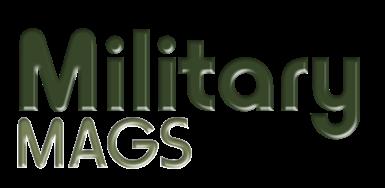




10 (Assaye) Battery
10 (Assaye) Battery deployed on Exercise ASSAYE METIS to assess command post skills ahead of its deployment to the Watchkeeper Flying School. 10 Battery established a tactical command post, with a plans and operations cell, alongside multiple Ground Control Stations using the Unit’s virtual training system. The exercise tasked 10 Battery to plan and execute one of two Regimental Watchkeeper task lines in support of 3(UK) Division, train for tactical replenishments and investigate faster methods of survey with inservice equipment.
During the exercise, 10 Battery hosted a number of VIPs, including the Brazilian Chief of the General Staff and the UAS Group Commander. Both were impressed with the enthusiasm and initiative that personnel demonstrated to overcome tactical problems in a peer-onpeer simulated scenario.
Exercise ASSAYE METIS has been a great success for both 10 Battery and 47th Regiment Royal Artillery. It provided an
The Watchkeeper Flying School (WKFS) in Fort Bliss, El Paso, Texas, has continued its interoperability and integration with E Company 501st Combat Aviation Brigade. Training and operational flights of RPAS systems are seamless and simultaneous, with UK and US forces also conducting joint training and tabletop exercises. An exciting development has been the implementation of a new Watchkeeper Commander training program,
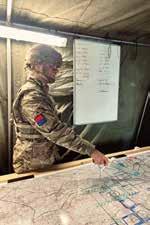

opportunity to test tactical procedures against a peer (simulated) enemy, assess responsibilities and future training requirements of the Mission Controller and update ODOPS.
which has seen the School begin to coordinate ground units with the Operators in the Ground Control Station. This is an exciting time to be at the WKFS, showcasing this promising development in the progression of the British Army’s Divisional
43 Battery (Lloyd’s Company)
The wind and rain began to stream in sideways as 43 Battery (Lloyd’s Company) 47 Regiment Royal Artillery deployed on a week-long exercise to the misty clag-covered, otherworldly plains of Dartmoor.
W ith sodden smiles, 43 Battery and attached arms displayed utter professionalism as they bombed up magazines, advanced to the point and took aim. The purpose of this exercise to Okehampton Camp and its ranges on Dartmoor were so that all personnel present, could fulfil their mandated individual training requirements to qualify them to deploy on operations later this year.
4 3 Battery, known collectively as the Unit of Action (UoA),

undertook training in weapon handling and marksmanship, battlefield medical care, IED awareness, navigation and developed Junior leadership throughout . Those empowered to deliver lessons had a chance to develop their own teaching styles as the prospect of working with partner nations in NATO increases. The UoA is now looking to the future as it prepares to undertake its validation exercises in the coming months.



RPAS capability and is a prime opportunity to further Defence Engagement with our special ally.
First published in ‘Royal Auxiliary Air Force 1924-2024 100th Anniversary’
606 (Chiltern) Sqn holds a unique position in RAF Sqn history. The number 606 was never allocated in the 1930s, although it was held in readiness when the majority of the Auxiliary Air Force was formed. The number was never activated as a flying Sqn and consequently it has never operated aircraft.
Formed as Helicopter Support Sqn of the RAuxAF at RAF Benson on 1 October 1996 and renamed as 606 Sqn on 1 October 1999. It is numbered within the range allocated to flying sqns and provides a valuable support role to the tactical support helicopter fleet yet does not operate any aircraft of its own. 606 Sqn has supplied personnel to Operations and Exercises globally.
On the same day it was awarded its number, 606 Sqn officially joined Joint Helicopter Command (now JAC), the tri-service organisation which unites and co-ordinates the battlefield military helicopters of the British Armed Forces. Personnel accompanied JHC units on operations in the Balkans in 1999. 606 Sqn continued to support operations in Bosnia, Kosova, Iraq and Afghanistan.
Most recently the sqn supported operations in Mali as well as enduring support for Op Shader in Cyprus. In 2023 sqn personnel deployed to Brunei to assist 230 Sqn with their move to Medicina Lines.
606 Sqn is the only RAF Reserve Sqn within Joint Aviation Command and provides RAF Reserve personnel in support of the Support Helicopter Force. It achieves this by recruiting and training personnel in a range of ground-support branches and disciplines. These include Air and Space Operations, Chefs, RAF Regt Gunners,
Electrical and Mechanical Engineers, Drivers, People Operations, Logistics and Physical Training Instructors.
The Sqn has the honour of being associated with the Worshipful Company of Lightmongers who were granted their Royal Charter in 2021. Other military units associated with the Lightmongers include HMS Queen Elizabeth. In 2021 the Sqn was awarded the Robins Trophy – awarded annually to the RAuxAF unit judged to have done most to improve the good name

and efficiency of the RAuxAF during the year. 606 Sqn has the privilege of being awarded this trophy on 4 occasions.
In October 2021 the Sqn celebrated 25 years with a formal parade and dinner.

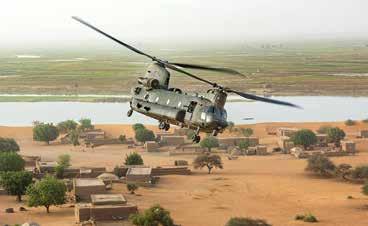

Commando Helicopter Force’s 845 Naval Air Squadron, operating in the Arctic as part of Operation Clockwork, have reciprocated to their Norwegian hosts using their Merlin Mk4 helicopters.
Written By: Lt Dempsey RN
– 845 Naval Air
Squadron
The task of replenishing the Arctic Cabins found in the Øvre Dividal National Park has become a longstanding goodwill gesture provided by Commando Helicopter crews as a thank you to local Norwegians every year during Operation Clockwork. The cabins, which sit at over 2000ft above sea level, are used by hikers, and in emergency situations, due to the changeable and dangerous weather experienced in the Arctic Circle. Dry, quality firewood is essential fuel to keep hikers warm as they wait out the weather, and keeping these emergency cabins stocked can be an arduous task.
With the help of MAOT (Mobile Air Operations Team), who prepared the pick-up site and stores to be loaded both into and underneath the aircraft, the Merlin crews prepared to begin delivery of their important
cargo. Lifting from the site, the aircraft flew through valleys before climbing the towering mountains of the National Park to their drop off points near the cabins. Without helicopter support this task would often be completed using local volunteers riding snowmobiles through the wilderness for weeks, affecting the local reindeer populations and other wildlife. By using the Merlin however, the 3 tons of cargo was moved in a matter of hours.
The firewood had been provided by the Troms Turlag (The Norwegian Trekking Association), who request the help of the CHF units on their annual winter deployment in northern Norway. Operation Clockwork, which has taken place for the last half a century, sees CHF squadrons train in winter operations, joined by other members of the UK armed forces and NATO allies.
From learning to maintain the aircraft in temperatures as low as 30°C, to landing in a snow cloud, this training is imperative to keep Junglie operators at the forefront of Great Britain’s Arctic capability.
For some of the crew this has been their first experience operating in the Arctic Circle, and some of their first flying following their Arctic Flying Qualification; “It was humbling to be part of this year’s contribution to a long-established gesture of thanks to the Norwegian community.”
“It served as a challenging opportunity to practice the skills I had recently learnt in my Arctic Environmental Qualification outside of a training scenario.”
Operation Clockwork leads swiftly this year onto Exercise

Nordic Response, which will see the skills being learned and perfected now put into practice as part of a multinational NATO exercise in the high north. 845 Naval Air Squadron will be used to move more than just logs, as the helicopter becomes a fundamental tool for moving UK Commando Forces, troops from NATO countries and essential equipment around the battlefield.


Soldiers from 21 Air Assault Battery deployed to Fort Liberty, North Carolina from 6 Jan – 2 Feb 24 in support of C Company 2 PARA and the 1st (Devil) BCT of the 82nd Airborne Division for Ex DEVIL STRIKE.
The exercise aimed to test the airborne insertion of the Lead Assault Force (LAF), the Extreme High Readiness (EHR) element of the UK Global Response Force (GRF), who are held @R1 (48hrs) to support criseis around the world, as part of the UK/US aligned GRF.
Initial elements of the exercise focussed on integration with the 1st (Devil) BCT and their use of the AeroVironment (AV) RAVEN Uncrewed Aircraft System (UAS) platform, the UK AV PUMA UAS platform and the conduct of familiarisation parachute jumps with the US T11 Parachute.
Whilst Fort Liberty is home to the largest parachute deployed force elements in the world, the weather in North Carolina wasn’t favourable and despite ‘kitting up’ three times to prepare for a necessary familiarisation jump, the met conditions just were not favourable; ‘no jump today’ as the US Parachute Jump Instructors would say. This therefore meant that much of the Lead Assault Force would not be able to parachute into the exercise.
The Field Training Exercise therefore began with what is fondly known as a ‘Heli Bedford’ (by road) insertion

that saw the Det positioned away from the Drop Zone. This led to a 5 km foot insertion, carrying a PUMA III system, weapon, ammunition, rations, and water. Genuinely an impressive feat and demonstrates the will to win and can-do attitude of soldiers within the Battery. Whilst AV PUMA is not famed for being a person-portable system, it states a 500m
carrying limitation in the Ops Manual, the Detachment have now set the bar in terms of what is possible.
The FTX saw AV PUMA integrating with both UK and US force elements and the use of smaller UAS platforms (Parrot ANAFI) operated out to a Special Purpose Clearance range of 4km.

Joint Helicopter Support Squadron (JHSS) is Defence’s dedicated helicopter-handling specialist unit.
Written By: MAcr Greensmith and Flt Lt Miller
Helicopter handling can be a dynamic environment and potentially dangerous, therefore for many years its Training Wing has taught Defence personnel the skills required to facilitate safe and effective helicopter operations. This is done through a number of courses and bespoke training that span the Rigger Marshaller, Landing Point Commander, Helicopter Load Slinging Equipment Inspector (recently inherited from St
Athan), Helicopter Landing Site Manager, Helicopter Handling Instructor (recently handed to JHSS by Joint Air Delivery Test and Evaluation Unit, RAF Brize Norton) and Mobile Air Operations Team Leader qualifications.
Earlier this year Joint Aviation Command (JAC) made the Sqn the lead provider for helicopter handling training for Defence. This has enabled the much-anticipated Training Wing re-brand to the ‘School of Helicopter Handling’. This

confirmation as a-Centre of Excellence underscored the work, experience and dedication of the instructional staff to assure courseware and standards for other units across defence.
Spanning the ‘Heli handling hierarchy’, the School enables personnel to safely marshal helicopters, rig and fly loads, and to select and mark appropriate landing sites. Course lengths vary, with a blend of classroom, theory and practical application. For example, students on the Rigger Marshaller Course learn the concept of helicopter operations and load slinging equipment in the classroom, then the practical skills of building and hooking in the hangar, before moving onto live hooking to a helicopter just feet from their heads.
Staff are multi cap-badged, coming from the Royal Air Force, Army Air Corps, Royal Engineers and Royal Logistics Corps, giving the


School a dynamic range of experience and backgrounds. This pays dividends when collaborating with other units for mutually beneficial training opportunities. In recent months, this has included work alongside 2 Para and other 16X units, 22 Sqn and 3 Royal School of Mechanical Engineers to lift a variety of equipment and unusual loads across southern England.
The School itself consists of classrooms with workbenches, use of the JHSS hangar and a comprehensive range of load slinging equipment for students to get their hands on. The hangar space is used for practical instruction and assessment before moving out into the aviation environment and hooking. Most hooking serials are facilitated with the assistance of 18, 27 and 28 Sqn using either Chinooks or Pumas. The use of live aircraft is essential for Rigger Marshallers to qualify, therefore the School’s tasking is given the highest priority by JAC.
The School is moving from strength to strength, with current courses being constantly reviewed and updated as well as new courses hopefully coming on-line shortly. Although the School isn’t that old a dog, it is more than happy to learn (and teach) new tricks.
The battlefield is a place where the course of history is shaped, and the echoes of conflicts resonate long after the dust settles.
Written By: SSgt Goddard
1AAC
Abattlefield study (BFS) provides a unique opportunity to delve into the past, examine the present, and gain valuable insights.
where the physical landscape and remnants of war provide invaluable insights. By combining these approaches, a
BFS brings history to life and offers a unique perspective. Padre Andrew Barton conducted a Service of
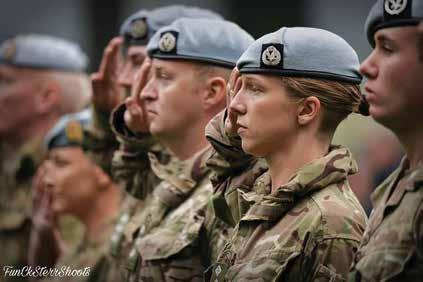
An Arnhem BFS goes beyond mere historical recounting; it allows us to comprehend the human experiences and sacrifices made in times of conflict. By visiting sites across Arnhem, 1AAC gained a first-hand glimpse into the conditions, strategies, and emotions that shaped pivotal moments in history.
Our exceptional Tour Guide Capt Matthew Mockford AAC included a visit to the Oosterbeek Church, which was repeatedly attacked during the siege, and the Oosterbeek War Cemetery. Capt Mockford took 1AAC to explore historical sites, primary locations of battles, and personal accounts from soldiers developing a comprehensive understanding of the events that unfolded. This information was then combined with site visits,
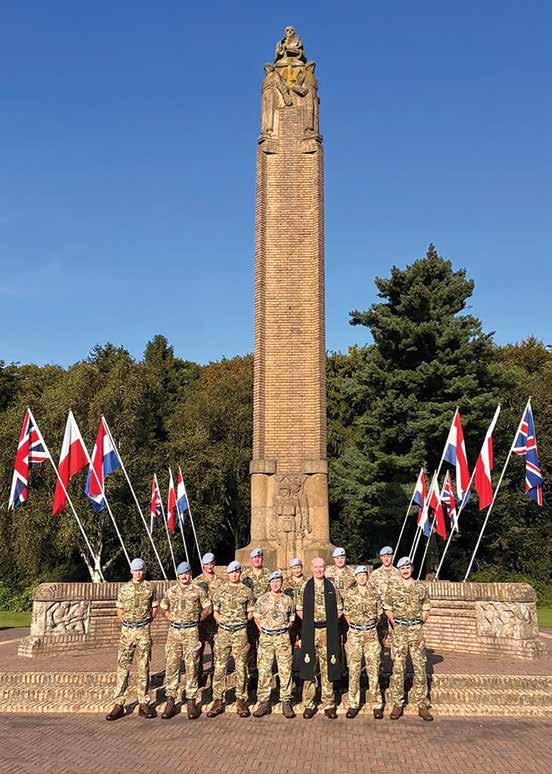

Remembrance with 1AAC at the Airborne Monument Oosterbeek, reading all the names of the Glider Pilot Regt soldiers that gave the ultimate sacrifice. The power of this moment was captured on the faces of several visitors who had come to pay their respects and remember the fallen. In conversation with them we learned of the role they, or their parents, had played in tending for the wounded or offering up their homes. Human story portrays historical events in a way that textbooks cannot.
The BFS was a moving and educational experience for the younger soldiers and officers of the group, gaining a deeper understanding and appreciation of the history and heritage of their corps and their predecessors. Our roles make more sense, and we are inspired to fulfil them more intentionally, once you have seen and heard the stories of those whose shoulders we stand on. The BFS also inspires us to uphold the values and standards of the AAC and the British Army.
1AAC paid tribute at Oosterbeek War Cemetery to the fallen soldiers with thousands of onlookers also being included in the ceremony, Flower Children from Arnhem raised their bouquet in an eyewatering mark of respect. The primary schoolchildren laid flowers on each of the more than 1,700 graves at Oosterbeek Commonwealth War Graves Commission cemetery in front of a crowd of around 5,000. The children pay their respects every year in what has become a ritual for the Dutch to keep alive the memory of the men who died trying to liberate the town in September 1944 but were overcome by overwhelming German forces.
Beyond the military implications, our BFS also preserves the historical
heritage and commemorates the sacrifices made by soldiers. By visiting these sites, we pay homage to those who fought and reflect upon the impact of war on society. This helps us appreciate the value of peace and strive for conflict resolution through peaceful means.
“WE WILL REMEMBER THEM”

On
1 Jan 24, 18 (Quebec 1759) Battery began its
commitment to the Very High Readiness Joint Taskforce, Land, (VJTF), the UK’s commitment to the NATO Response Force (NRF).
Written By: Sgt Mccabe – 32 Reg RA
The Battery has focused on delivering tactical training to its pilots and commanders of the Specific S2 Uncrewed Aircraft System (UAS) Puma AeroVironment. Prior to the VJTF(L) deployments, all commanders and pilots had to complete a rigorous training syllabus that assessed their ability to operate the aircraft in a tactical environment.
Being part of the VJTF(L) sees personnel held at 48hrs Notice To Move (NTM). The Battery has focused on its preparations for deployment on Ex BRILLIANT JUMP 2 and Ex POLISH DRAGON in support of 7 Light Mechanised Brigade Combat Team (7 LMBCT). This is part of
the Ex STEADFAST DEFENDER series which sees the largest deployment of NATO forces to Eastern Europe in recent history.
The exercises began in early Feb 24, deploying two UAS detachments operating from a Coyote vehicle, with the Battery Commanders Tactical Party and a Troop Commanders Tactical Party to Poland.
Arriving at Drawsko Pomorskie Training Area (DPTA), the UAS detachments immediately began to integrate with the Scots Dragoon Guards (SDG) and the 2 Royal Anglian (2 R Ang) Battlegroups. Complex flying practices followed with NATO allies from Spain who
operate similar UAS equipment supporting UK, Polish, Spanish, and Turkish manoeuvre combat forces. This opportunity to share in an Air Safety cultural exchange greatly enhanced our multinational relationships and increased the ability to work alongside each other in future operations. It has been richly rewarding and has improved the capabilities of all involved.
Having travelled over 1000km by road, which included the use of multinational bridging assets to cross the Vistula River, UK Forces travelled east across Poland and arrived in Bemowo Piskie Training Area (BPTA). Upon arrival, the troops continued their training in harsh environments.

This phase of the exercises has allowed the detachments to operate alongside 4th Regiment Royal Artillery, providing additional ISTAR to those conducting live artillery, mortar, and live combined arms training.
After a rewarding and successful exercise, the Battery looks eagerly ahead to the new opportunities and challenges of supporting the NRF and Allied Reaction Force.


Between Feb-Mar 2024, Royal Air Force Benson Police Flight hosted the largest joint agency training for South of Vale and White Horse, Thames Valley Police (TVP) Force which included very front-line response team within the TVP response remit, training 118 Police Constables, 25 Police Sgts, 3 Inspectors and the Chief Inspector.
Written By: Cpl Darlington
The RAF Police (RAFP) hosted the event utilising the airfield at RAF Benson to facilitate practical scenarios for both forces to test tactics, techniques, and procedures. The scenarios were set up in staged locations with props and actors to optimise the realistic element. The training days started with an RAFP brief on Military Police jurisdiction, Service Justice System processes and RAF Police specialities. TVP presented a pretraining policy and legislation brief prior to the officers participating in training exercises. The training was conducted as a ‘Round Robin’ exercise whereby TVP officers worked in response pairs, working through five hostile stop and search scenarios and one vehicle search lesson led by RAF Police. The day was concluded with a team building activity led by RAF Police to develop positive reinforcement whilst promoting resilience and team building.
The scenarios consisted of typical response situations the

officers may experience on a real-time call out such as the possession of illegal substances including within a motor vehicle and a public setting, offensive weapons in a public place, suspicious person and a person suffering from a mental health episode. These scenarios provided TVP officers with skills such as adaptability when


dealing with different situations and judgemental assessment for the correct course of action and use of powers.
The vehicle search lesson was described as the most beneficial and enjoyable element to the training allowing RAF Police to teach TVP officers the most operationally effective methods to conduct a search of a vehicle for items such as stolen goods, prohibited articles, unlawfully obtained stores, drugs and psychoactive substances.
The joint training has been mutually beneficial for both TVP response officers and RAF Police, learning from each other and understanding each other’s vital role in policing RAF Benson and the local community.
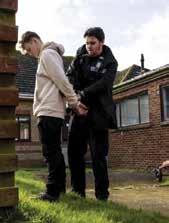

Another Operation Clockwork has drawn to a close and personnel and equipment have returned from the High North having trained in this harshest of environments.
Air crews, engineers and logistics experts from Joint Aviation Command have withstood the challenging training to ensure they can maintain and operate their aircraft in these extreme conditions. Operating Apache,
Merlin and Wildcat helicopters from a snow- and ice-covered landscape with temperatures dipping below -20°C is particularly challenging but is essential to ensure that they can support the Royal Marines alongside Norwegian and NATO allies.


Underslung load training with

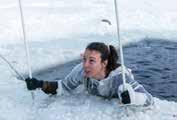




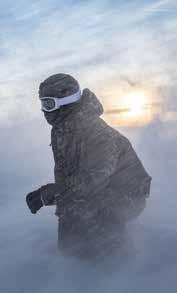

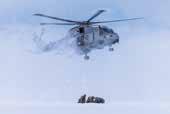

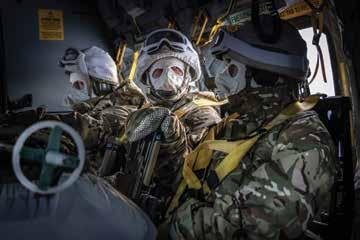

Group photograph off all the elements of


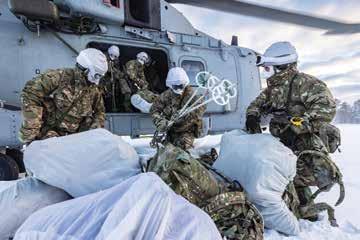
Students begin the tactical phase of the course.

The Kentish Cup is named after Brigadier General R J Kentish CMG DSO and was first played for in 1921 with the purpose of fostering relations between Armed Forces. The tournament was first played between The British Army, French and Belgian Force. Today it is a triangular football tournament contested between the Armed Forces of France, the Netherlands and the UK. Following the UK's success in the tournament in December 20, LZ Interviewed The UK Armed Forces Football Team Coach, Cpl Daryl White, based at RAF Odiham.
What made you want to join the RAF?
Both my Grandad and Dad served in the RAF, so since the age of one I have lived this military lifestyle and knew early on it was something I wanted to be a part of.
How did you get into football coaching?
At 24 I had to stop playing due to an injury to my hip. I love the game and wanted to stay in it any way possible. I was lucky enough to get onto my FA Coaching Level 1 course in 2015. On the course I meet the UK Armed Forces
manager at the time, Nick De Long, as he was one of the tutors. We got along well and over a couple of months, he appointed me as his Analyst. This helped with my knowledge and understanding of the game as well as accelerating my development and exposure which helped me on my Level 2 Coaching course and UEFA B.
What’s the best thing about being the manager of UK Armed Forces Football?
People – being able to support the players, see them continuing their development and being able
to give them opportunities to represent their country is a huge honour for me.
It’s also about building something on the pitch that connects with everyoneplayers, staff and everyone that
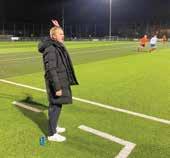
watches our games. My staff are people I really trust and care about, they are people who share the same values as me. They treat people with care and honesty and will give the players everything they have to offer, the same as myself.
What are some of the challenges you have faced?
Developing whilst trying to win - we are trying to grow UK Armed Forces Football on and off the pitch. It is important for the organisation that we grow on and off the pitch, so everyone connected with UK Armed Forces football

leaves it in a better place than what we found it.
We also don’t get to see many videos of the opposition, so a lot of the analysis we use is from the year before. We focus on us and will speak to the players about things we might see, but as staff and players we must be reactive to what we see and adapt quickly.
What motivates you to succeed with this UK Armed Forces Football Team?
Being all in – since I first started within the organisation, I have seen first-hand the effort and sacrifices players and staff past and present have put in. We would not be in this privileged position if it wasn’t for the people before us and we must not forget the journey we have been on to get here.

What have the UK Armed Forces Football Team achieved so far?
Since I took the role last year, we won the Friendship Trophy against the Irish Defence Forces winning 4-1 in June. We also went to France in December and won the Kentish Cup, which is the pinnacle of military football, drawing 1-1 against France and beating the Netherlands 5-2.
Where do you see UK Armed Forces Football going in the next few years?
I truly believe with the executives we have in place anything could be possible. For us as a group we believe we could be used for Defence Engagement and bring real positivity for the UK military.
I believe the bigger we are and the more exposure we receive, we can help with recruitment for all three services. We have players that played league
football, signed pro contracts, received scholarships. However, it hasn’t worked out for them, but we are able to give them brilliant experiences in football alongside a career in the Royal Navy, British Army or Royal Air Force.
Who is your role model and why?
My Dad will always be top of the list, the support he has given me as a child and adult. You couldn’t ask for more.
I then have a small circle of people that have supported me through the highs and lows and if it wasn’t for them, I would not be in the position I’m in now. They are Nick De Long, Dyfan Pierce and Richard Lawtey, they’ve helped me grow and develop as a person as well as a coach.
Then when I look at football coaches the two that really standout are Nigel Adkins
and Russell Martin. They are two managers that lead with connection and relationships, I enjoy the football they play, I’ve taken a lot from them and used it in my own way.
What advice do you have for people who want to do what you do?
Enjoy the journey, everyone’s coaching journey is different. Be a sponge. You’re always learning and making mistakes which helps you become a better coach.
What is your most rewarding coaching achievement to date and why?
For me it was winning the Kentish Cup out in France in December. The whole journey of last season led to this tournament, the staff were brilliant, and the players were outstanding, worked so hard and thoroughly deserved the win.

14 service personnel from 1 Regiment AAC deployed to the Nepalese Himalaya between the 17th November and the 8th December 2023, to trek in the Khumbu Valley Region and Sagarmatha National Park.
Written By: Capt Forrester.
The aim was to summit the 5357m peak Gokyo Ri. This mountain sits under the western slope of Mount Everest and on the edge of one of the largest glaciers in the Himalaya. One of the most beautiful places on the planet, a week’s walk from a road, with oxygen level around 50% of sea level and still air temperatures as low as -10°C. It is a testing place where just surviving becomes hard, as some found out.
Prior to deployment as part of the selection, individuals were invited to attend a one-day hill walking exercise in the west of Bannau Brycheiniog National Park (Brecon Beacons), in the vicinity of the iconic Llyn y Fan Fach and Llyn y Fan Fawr.

The 1 AAC Padre joined us for the walk which enabled us to stop at two historic crash sites enroute to conduct Acts of Remembrance.
The first three days of the expedition involved a checkin with British Gurkhas Nepal HQ in Kathmandu to gain satellite phones and safety critical information, meeting the guides that would be supporting us on the journey, and the 12-hour road move to the start point, the village of Salleri. It took ten days of trekking from Salleri to the summit Gokyo Ri, over which the group had walked circa 120km and climbed 10,000ft. The team stayed in tea houses throughout the journey where we were fed, watered, and given shelter for a small
price. Notably each tea house providing their own version of dal bhat, a traditional meal with steamed rice, curries, lentils, and meats that became a welcome staple of energy. Ascending the winding paths, it was amazing to see the environmental changes with altitude, beginning low level with large valleys covered in forests, greenery and small villages clinging to the edge of every slope, up to the snow-capped, sharp, rocky peaks with rivers replaced by deep glaciers carving chasms in the landscape.
Memorable moments included our first view of Mount Everest from Hillary Suspension Bridge, sharing the trails with the unique logistical transport method of donkeys and yaks,
being hosted by the Rai community for a local cultural evening with a 3course meal including local Nepali drinks and dancing, and having fish and chips at a trout farm at circa 2500m.
The experience that officers and soldiers had on the expedition was unique. It was a once in a lifetime opportunity that would not have been the success it was if it had not been for the work of WO2 Lepcha (SPS) who organised and arranged the expedition. Finally, 1 AAC and the expedition personnel would like to make a huge thank you to all who were able to provide funding and support for the expedition to make it the triumph it was.




Joint Aviation Command (JAC) has recently launched the largest overseas deployment since Iraq and Afghanistan to take part in Ex Steadfast Defender 24 training alongside our allies in Finland and Estonia.
The fleet of three Chinook, nine Apache, and four Wildcat assembled at Wattisham Flying Station in Suffolk to take off together on the morning 24th Apr. Some 130 vehicles – from fuel tankers to Land Rovers - travelled by road and rail to the Baltics, with the majority of the 500 aircrew, engineers and groundcrew that operate the helicopters flying out.
This is the first NATO deployment of the new Apache AH-64E variant which offers improved flying performance and new sensors and communications systems that vastly improve its battlefield performance over the Apache Mk.1 it replaces. It is more lethal, agile, and survivable. It is also better able to integrate with other ground and air assets, allowing for the sharing of information which allows the crew to find and strike the
enemy before our forces are targeted themselves.
All three helicopter types took part in Air assault operations under the command of 16 Air Assault Brigade Combat Team which saw troops and equipment lifted by Chinooks, with the Wildcats’ surveillance equipment working with the Apaches’ advanced suite of sights and sensors to find and strike targets on the battlefield. They were joined by the Puma

Uncrewed Aircraft System (UAS) operated by 32 Regt RA as part of the JACs newly formed UAS Group.
All this activity comes under the umbrella of Exercise Steadfast Defender 24, which is testing and refining NATO’s plans for reinforcing European defences against a near-peer adversary. Some 20,000 British personnel are involved, among 90,000 troops from all 32 members of the alliance.





Written By: AirTpr Allen
2023 was a very busy year for me.

Imanaged to deploy on multiple exercises while also working with organisations across all aspects of defence. Both global and domestic.
At the start of 2023, preparations were made with the assistance of UK Strat Com to get national media coverage of our Freedom of Wincanton Parade in which I provided the imagery capture. This consisted of interacting with the local council, capturing the event itself, and then assisting with Army Comms to get the images distributed across multimedia.
In January into February, I sent out feeders and, with the help of Capt Faux, had Soldier magazine come down to the Regiment to do a 6 page package about 1 Regt AAC. After some discussion, I was also asked to create a specific

image for the magazine that in turn was then used for the front cover of the magazine.
In March I deployed to Scotland for Ex Wildcat Fire to provide media capture. The exercise consisted of capturing Forward Arming and Refuelling Point activities as well as live firing, and working alongside Joint Terminal Attack Controllers capturing Paveway 4 being dropped by Typhoons off Cape Wrath at the very top of Scotland.
I deployed out on Ex Spring Storm/Op Peleda 23 as part of the 1AAC RHQ element and worked in support of 77X and NATO Enhanced Forward Presence where I captured different exercise activity from both RH and AH as well as live fire activity including assisting in the filming of footage that would be used in the BBC documentary “Living Next Door
To Putin”. In addition I captured the Prime Minister of Estonia and went on to do the aviation capture of the impressive Show Of Force whilst in the door of a Wildcat over a bay on the Estonian coast.
During the King's Birthday celebration flypast, I was again asked by UK Strat Com to assist in providing aviation content capture by taking photos of the Mall and Palace from the door of the Wildcat helicopter during the flypast.
In August, I was asked by the Army Offshore Sailing

Association to go to the Isle of Wight and then Dartmouth for a week to capture the Army sailing (and subsequently the tri service sailing teams) at the Dartmouth Royal Regatta which involved driving the RIB as the support boat as well as capturing both video and imagery of the racing.
After being the HMS Heron Base Junior Ranks President for a year, we managed to complete the renovation of “The Dash” station bar for the Junior Ranks. In recognition for this project as well as several other actions as President,
661 GSF on exercise.

I received the Royal Navy’s “Live your Life” award for work in improving the lives of others. I was the first ever Army recipient of this award.
Throughout the year I have worked in support of AAC Rugby as well as Army U23 Rugby where I have attended the games to film and provide game playback footage for use in review and study for the players.
My time in 1AAC has been unforgettable and I have been proud to record the Regiment’s history for future generations.

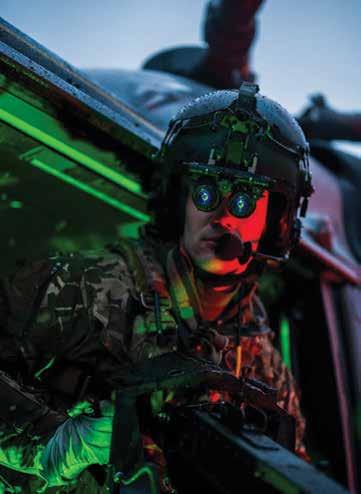
The Strategic Defence Review published in 1988 announced that a joint command would be created to maximise the availability of battlefield helicopters on operations and to deliver joint training and standards.
Prior to its formation there was a period in the early nineties which saw all three services operating helicopters in the same operations in Bosnia and Northern Ireland but under different command structures and with different rules and regulations leaving the operational commanders to have to sort out the differences between them.
On 5 October 1999 aircraft and personnel from the Royal Navy, Army and Royal Air Force formed Joint Helicopter Command. Sea King and Lynx helicopters of the Royal Navy’s Commando Helicopter Force joined the Army Air Corp’s Apache, Lynx, Gazelle and Bell 212 helicopters and Royal Air Force Chinook, Merlin and Puma helicopters. A total of 239 aircraft.
JHC aircraft make all the difference to military commanders and since its inception, it has proved itself pivotal to success on operations. Indeed, JHC has been deployed on operations around the world every year since its formation. Wherever defence has been over the past 25 years, helicopters have inevitably been there too, whether it be supporting Special Forces or through the years of Operation Telic in Iraq and Operation Herrick in Afghanistan. There have also been a vast range of smaller operations including Lebanon, Balkans, Pakistan, Sierra Leone, Kosovo and Mali to name but a few.
JHC’s work was not limited to combat operations having
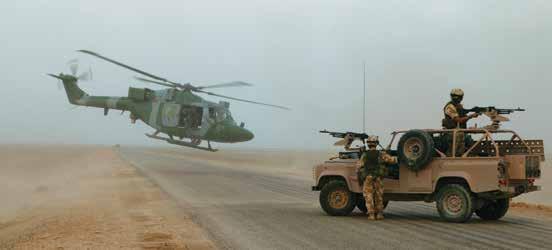
undertaken numerous Humanitarian And Disaster Relief tasks. In 2017, Puma helicopters were deployed to the Caribbean following the devastation caused by Hurricane Irma, flying 81 sorties, moving 1000 people and delivering much needed supplies. Military Aid to the Civil Authorities has also seen JHC Chinooks drop hundreds of tonnes of aggregate to shore up the Toddbrook Reservoir dam in 2019 and the COVID Aviation Task Force saw Puma,
Wildcat, Chinook and Merlin helicopters provide essential support at a time of national crisis, delivering personnel and equipment to where they were needed across the UK. On 23 Mar 20 a Chinook successfully conducted the first COVID-19 medical evacuation transferring a critically ill patient from the Isle of Scilly to Newquay International Airport.
As the last 25 years of the JHC comes to an end we look forward to the next 25 years.
JHC was unique within Defence as a truly joint organisation combining all three services by preserving single-service ethos and pride whilst capitalising on the strengths of each service. These strengths have today been carried forwarded into the re-organised Joint Aviation Command creating an organisation that is better suited to harness advances in uncrewed technologies alongside existing helicopter capabilities. The creation of the Uncrewed Aircraft

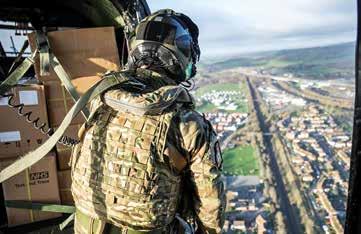
Systems Group under the JAC has brought together the Watchkeeper Force and the Army’s operational Uncrewed Aircraft Systems.
The future for JAC looks as busy, challenging and exciting as ever. At the time of writing it is doing what it does bestdeployed around the globe supporting UK Defence. Apache, Chinook and Wildcat helicopters, along with Puma UAS, are in the Baltic states supporting NATO exercises,
Puma helicopters are in Cyprus and Brunei, Merlin helicopters are embarked in the Indian Ocean, Chinook helicopters and Watchkeeper UAS are training in the USA, and personnel from Joint Helicopter Support Squadron and Tactical Supply Wing are deployed in the Falkland Islands. In the UK, aircraft and personnel remain at high readiness to support whatever comes next, ready to write the next chapter in the history books.

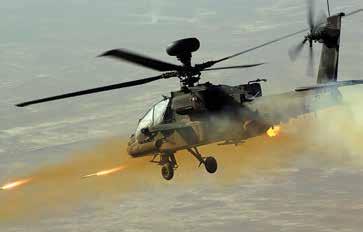
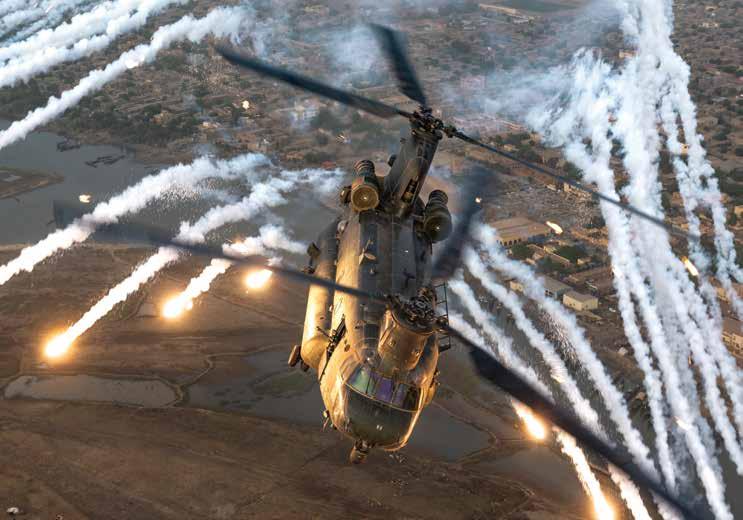
Written By: Flt Lt Winstanley
Alarge proportion of the landing sites within the United Kingdom are provided by landowners, many farmers fields with varying landing site considerations such as dimensions, trees, slopes, obstacle avoidance or confined areas and are spread throughout the countryside. These landowners provide the Chinook Force the opportunities to maintain their professional abilities and key skills for crews; thus, offering and enhancing the capability for the Chinook Force and rotary platforms as part of Joint Aviation Command (JAC).
On 17 April 2024 RAF Odiham hosted 50 landowners from across the country. The day
was a celebration of Chinook Force successes and aimed at thanking the landowners who offer free landing sites. The landowners were invited into RAF Odiham to witness the Chinook Force first hand. The day started with arrivals into the Officers Mess, greeted by the Stn Cdr, Group Captain Matt Roberts, who opened the day with a thank you and highlighted the importance of the land that the providers offer is for training by the Chinook Force. This was followed by the Chinook Force Senior Operator, who provided an overview of Chinook Force commitments, past and present, a brief on the aircraft along with a short video presentation. The Air Safety team followed, and presented an insightful
brief on the risks that are associated with the Chinook and rotary platforms: from the inherent downwash a Chinook creates, to JAC's top risks; midair collision, controlled flight into terrain/obstacles, and also an understanding of UAV operations. The intent of the brief was to inform landowners so they are more aware when Chinooks are operating in their vicinity, and to inform them of the importance of their land in de-risking activity through training. The landowners were also requested to share this information with other landowners and the community within their area. A short brief on horse riding and safety including the use of high visibility clothing or simply informing neighbours that
may have livestock that the landowner does allow aircraft to use the landing sites, again to promote safety for all.
Landowners were then taken to 27 Sqn where stage one briefs had been prepared for all those that were eligible to fly; a round robin of activity from a close up, show and tell of the aircraft, taking questions on performance and how agricultural the aircraft looked! The second stand was erected to show the Rotary Mission Support Map and our Field Directory to all landowners, allowing them to view firsthand the information that was retained on landing sites.
This also provided the Mission Support Cell Team with

the opportunity to obtain updates and gain additional landing sites across the UK, which was achieved. A short Air Experience Flight was provided, allowing visitors to better understand the Chinook and an approach to a field site to better understand what their land is used for.
A return to the Officers Mess and lunch with the Stn Cdr, Stn Executives of the Wings and a discussion brought the day to a close. A great success from the Unit perspective and an opportunity to thank those who have contributed to the success of the Chinook Force, allowing more training opportunities and better prepared crews for whatever Defence requests of them.





Our holiday home is available for breaks all year round.
Why not apply to stay in our holiday home for serving RAF personnel and RAF veterans? Situated only a 15-minute walk from the traditional seaside town of Bridlington.
It’s the ideal destination to visit for a holiday with kids or for some peace and quiet.
The four-bedroom chalet bungalow is wheelchair accessible, with a disabledfriendly bathroom. A real home from home, with everything you need for a memorable holiday.





£1 in every £92 of goods exported from the UK in 2020 were products manufactured by Airbus.
To find out more about our impact on the UK economy, please visit: airbus.com/en/instrumental-UK
Instrumental to the British economy for more than 40 years